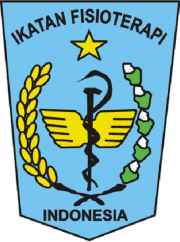Pengaruh Terapi Mandiri Oleh Orang Tua Terhadap Kelurusan Tengah Tubuh Anak CP Spastic Quadriplegia
Khabib Abdullah(1*), Al Um Aniswatun Khasanah(2), Anik Muwarni Darajatun(3), Mutiara Firdaus(4), Atik Swandari(5), Fadma Putri(6)(1) Universitas Muhammadiyah Surabaya
(2) Prodi D3 Fisioterapi Universitas Muhammadiyah Metro
(3) Fisioterapis RSU Haji Surabaya
(4) Universitas Muhammadiyah Surabaya
(5) Universitas Muhammadiyah Surabaya
(6) Universitas Muhammadiyah Surabaya
(*) Corresponding Author
Abstract
Background: Cerebral palsy (CP) is a disorder of movement and posture during the growth and development of children that is not progressive. One type of CP is spastic quadriplegia with one of the problems, namely the alignment of the middle body that is not optimal. This will result in increased spasticity and impaired respiratory and digestive functions. Research method: one group pre and posttest design on 10 children with CP spastic quadriplegia who experience difficulties in orienting the mid-body alignment in the supine position in the happy CP family community in Surabaya. Parents are taught how to massage the back and lie on their back according to the alignment of the middle of the body, then the parents independently massage the child's back for 15 minutes, 2x per day for 14 days. Proof of treatment is done by video call. Measuring instrument with GMFM dimension A (supine and roll) in percent. Results: The subjects in this study totaled 10 children with CP spastic quariplegia with an average age of 2.9 ± 1.1 years with a total of 5 male and 5 female subjects. The mean pre-treatment GMFM value was 0.38 ± 0.8% and the mean GMFM increased post-treatment, namely 4.2 ± 1.2 %, with a significant Wilcoxon test at 0.003. Conclusion: independent therapy by parents in the form of back muscle massage and position adjustment affects the mid-body alignment of children with CP Spastic Quadriplegia.
Full Text:
PDF (Bahasa Indonesia)References
Bingol, H. (2018). Effects of functional massage on spasticity and motor. Journal of Exercise Therapy and Rehabilitation, 135-142.
Carlberg, E. B. (2005). Postural Dysfunction in Children with Cerebral Palsy:. NEURAL PLASTICITY, 221-227.
Casteli, E. E. (2016). Recommendations for the rehabilitation of children with cerebral palsy. 52(5). Eur J Phys Rehabil Med, 691-703.
Furtado, M. A. (2021). Physical therapy in children with cerebral palsy in Brazil:. DEVELOPMENTAL MEDICINE & CHILD NEUROLOGY, 1-11.
Hong, J. S. (2017). New Ideas of Treatment for Cerebral Palsy : Capital flexion. Journal of Health Science , 56-72.
Kesar. (2012). Motor Cortical Functional Geometry in Cerebral Palsy and its Relationship to Disability. Clin Neurophysio, 1-17.
MacLennan AH, T. S. (2015). Cerebral palsy : causes, pathways, and the role of genetic variants. . Am J Obstet Gynecol, 779-788.
Mahmood, Q. (2019). Potential effects of traditional massage on spasticity and gross motor function in children with spastic cerebral palsy: A randomized controlled trial. Pak J Med Sc, 1210-1215.
Malik, B. A. (2021). Frequently Associated Problems of Cerebral Palsy. A.P.M.C, 24.
Nikmah, A. N. (2020). The Effect Of Mother-Baby Massage On Bounding Attachment. Jurnal Kebidanan dan Keperawatan 'Aisyiyah, 1-6.
Padmakar. (2018). Management and Treatment for Cerebral Palsy in. Indian Journal of Pharmacy Practice, 104-109.
Pfeifer, L. I. (2014). Hand function in the play behavior of children with cerebral palsy. Scandinavian Journal of Occupational Therapy, 21-27.
Sato, H. (2020). Postural deformity in children with cerebral palsy: Why it occurs and how is it managed. PHYSICAL THERAPY RESEARCH, 8-14.
Verschuren. (2007). Exercise Programs for Children with Cerebral Palsy. American Journal of Physical medicine and rehabilitation, 1-9.
Vitrikas K, D. H. (2020). Cerebral Palsy : An Overview. . Am Fam Physician, 213-220.
Article Metrics
Abstract view(s): 147 time(s)PDF (Bahasa Indonesia): 231 time(s)
Refbacks
- There are currently no refbacks.







